
Is the pen mightier than the sword?
While women in Australian colonies were campaigning for the right to vote, female shorthand writers were also fighting for the right to use their skill in business houses. An office was considered no place for a lady, and the consensus was that women had lower physical and mental capacity than men. The shorthand profession required precision, long hours and stress – all thought to be beyond women’s ability.
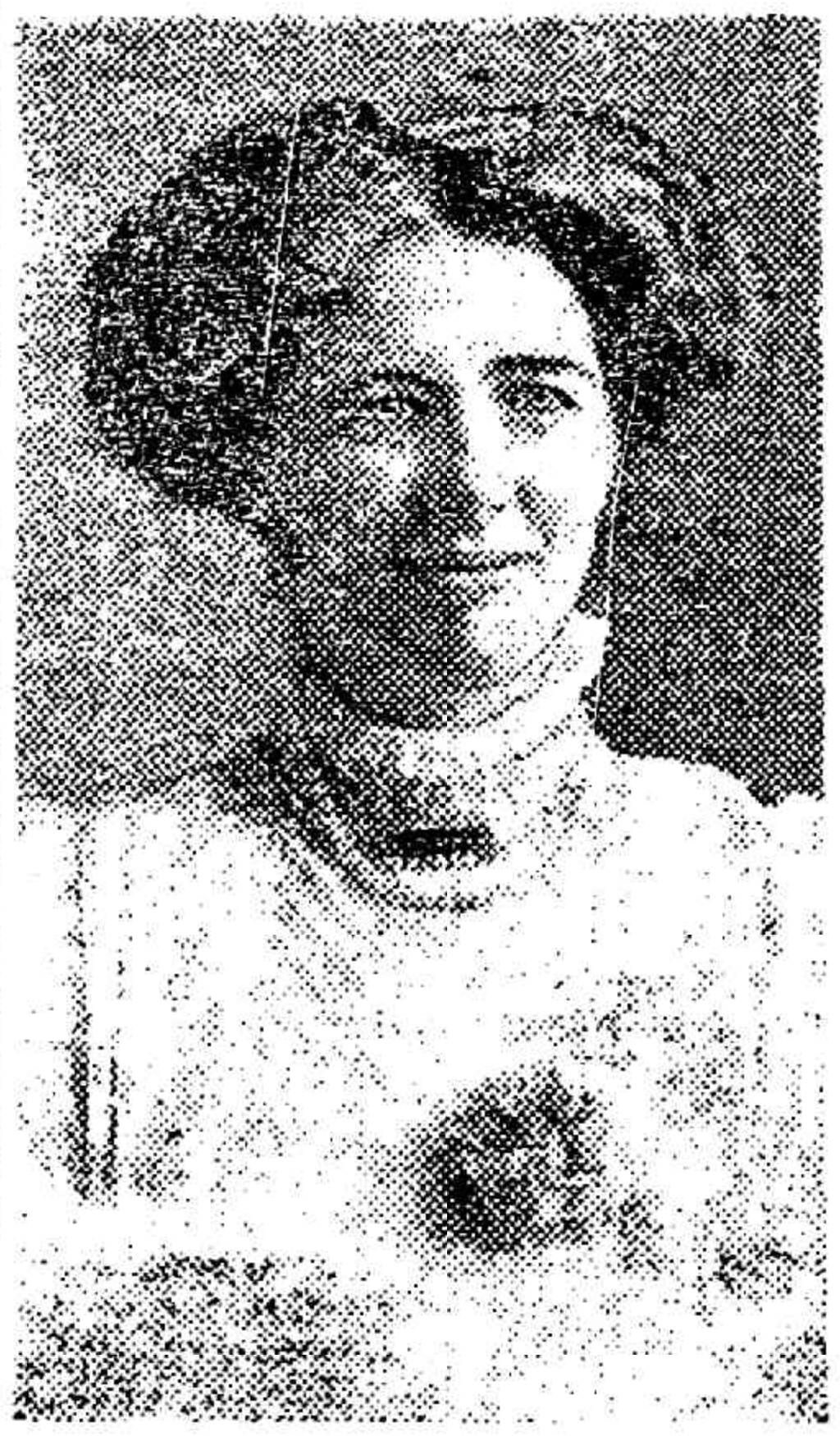
Harriet Powell undertook training for the Supreme Court Shorthand examination to prove that women’s intellect was not inferior to that of men.
Obstacles facing female stenographers in the years surrounding Federation were eliminated by an external force in 1914 – The Great War.
'The Great War virtually completed the work begun by the women's suffrage movement' – Western Mail, 17 July 1941
Prior to the War, shorthand colleges, had already begun targeting young women in their marketing campaigns, optimistically suggesting the skill could lead to employment or ladies may merely enjoy ‘the pleasure afforded by the knowledge.’
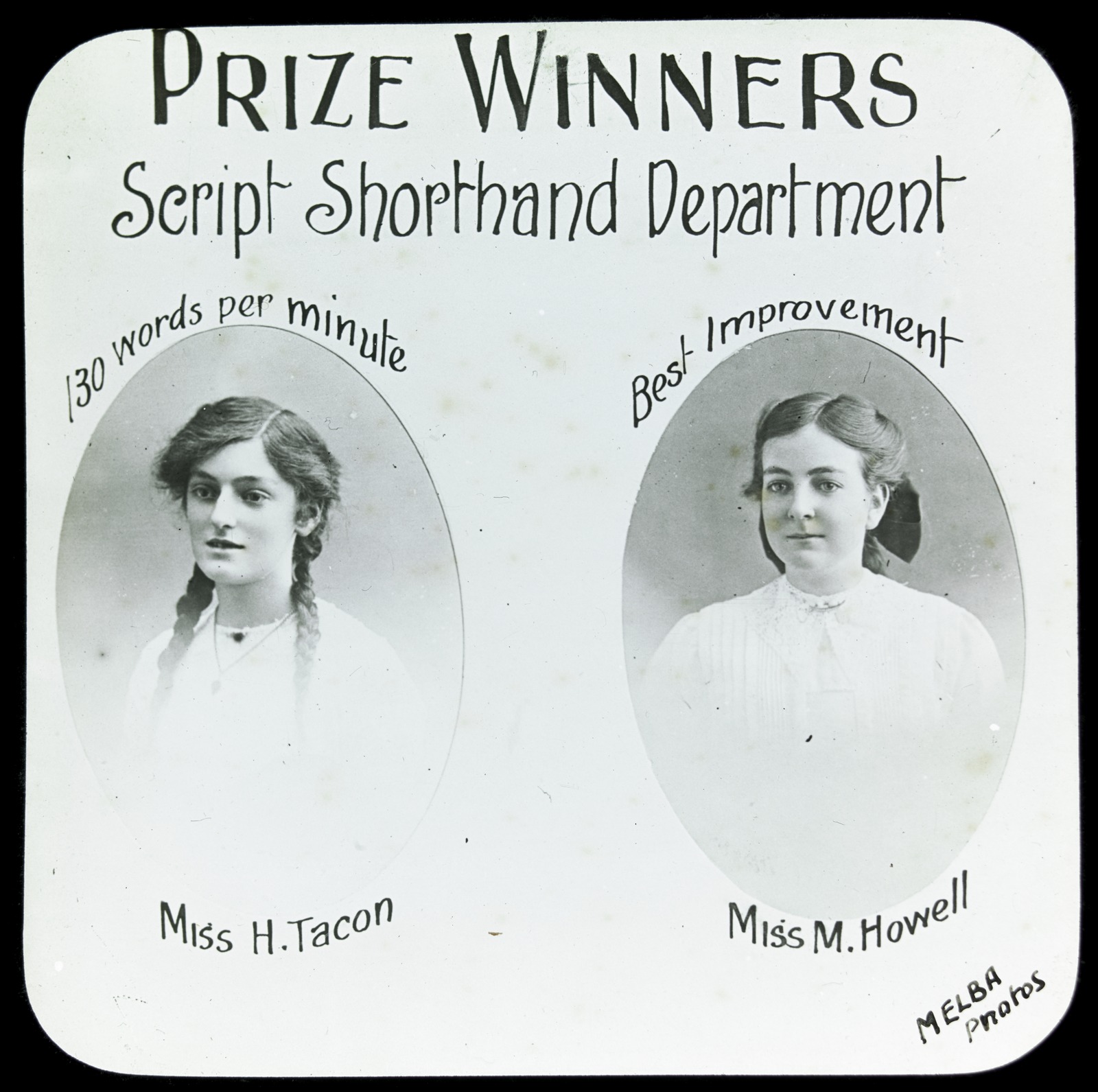
The exodus of young men from every walk of life to join the forces from 1914 fueled the need to educate female shorthand writers. The demand for skilled stenographers far outweighed the supply. For thousands of women, new and exciting prospects had suddenly emerged. Professional, white-collar employment had never been so lucrative or achievable.
The expectation was that women would surrender their positions of employment at the end of the war, to allow returned servicemen to retrieve their positions. This occurred in the case of married women. However, the death and injury toll from The Great War continued to impact businesses post-war. Many men did not return to work, allowing women to keep their positions, as the shortage of trained shorthand writers persisted.
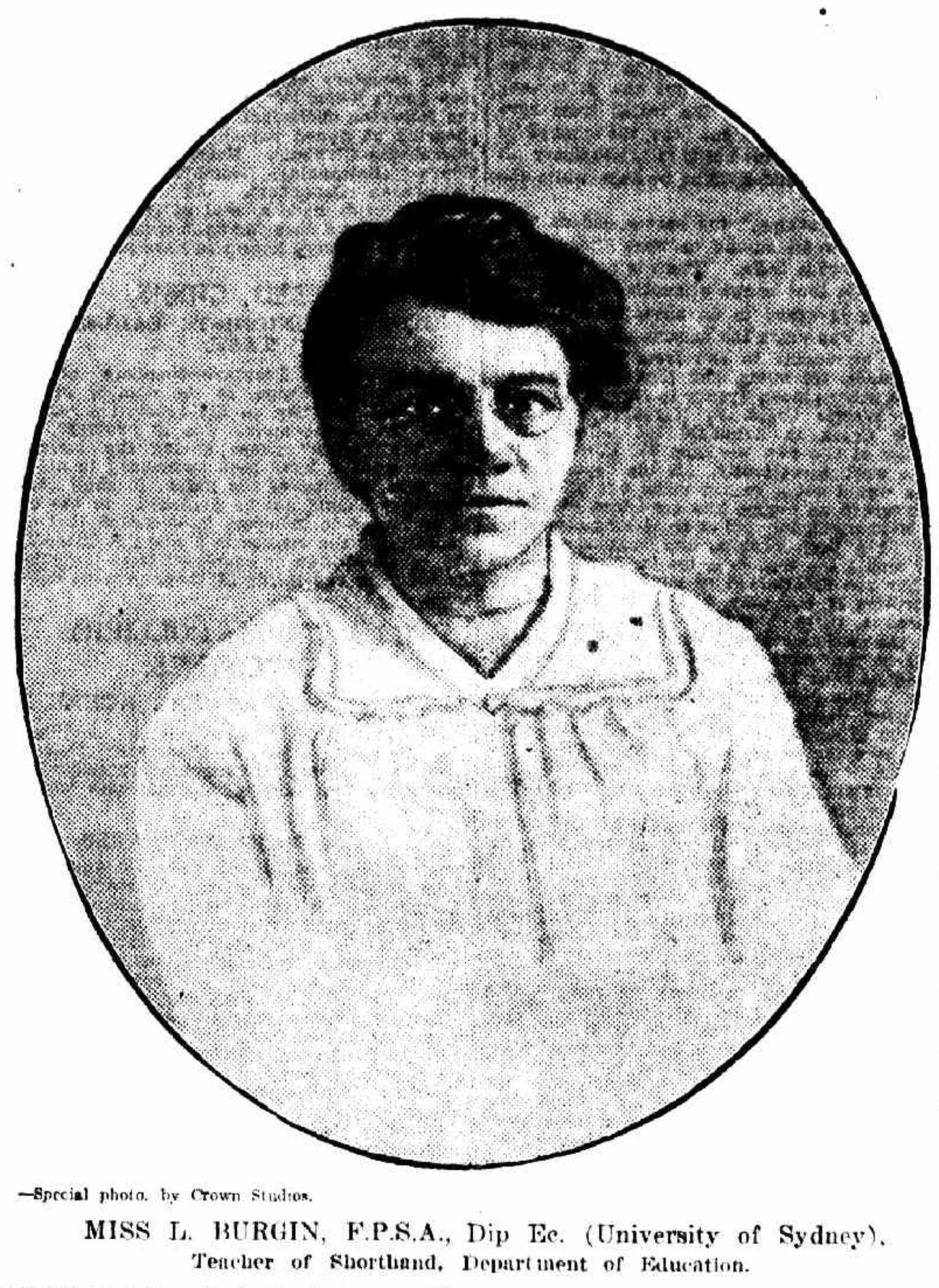
During the Great War, Miss Burgin was quoted as saying: ‘I believe shorthand offers a quicker, surer, safer and saner pathway to success than any other field of commercial endeavor’.
Australian Women’s Army Service
World conflict occurred again while it was all too fresh in the memories of many Australians. During the Second World War, Australia was well-equipped with female stenographers, when a plea went out for hundreds of shorthand writers to join the Australian Women’s Army Service (AWAS). Female stenographers who had married were often required to resign from work. They responded willingly to the call. As the motive for returning to work with AWAS was patriotic, there was no obligation to justify being a married working woman. Refresher courses and training for military activities, such as courts-martial, took place across the country at designated training camps and night schools.
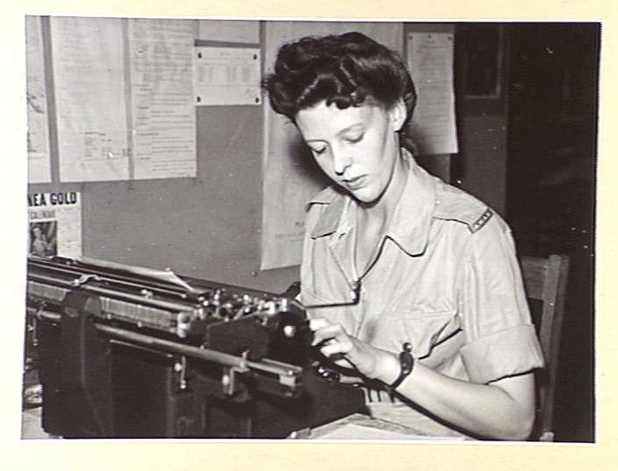
After a day in the office, civilian women continued to use their skills for evening volunteer work. In Sydney members of the Clerical Women War Workers were identifiable by their enamel lapel badges. Depicting a khaki bow tied around a quill, the badge showed the organisation’s name written in shorthand. Money for the war effort was raised from membership subscriptions and social events.
Preparing Today for Tomorrow’s Opportunities
Everitt’s College, a Melbourne shorthand college, relished the opportunity to introduce new courses. The nationalistic title, Victory Courses, provided shorthand revision classes for ‘mature and married women’. Their slogan, ‘Preparing Today for Tomorrow’s Opportunities’, suggested that employment opportunities may still prevail post-war. The war had extended long enough for women to enjoy lifestyle changes, which provided friendships, finance and freedom. The paradigm of “a woman’s place” had shifted, leading to many AWAS shorthand writers taking their skill into peacetime occupations.
Shortwave and Letters
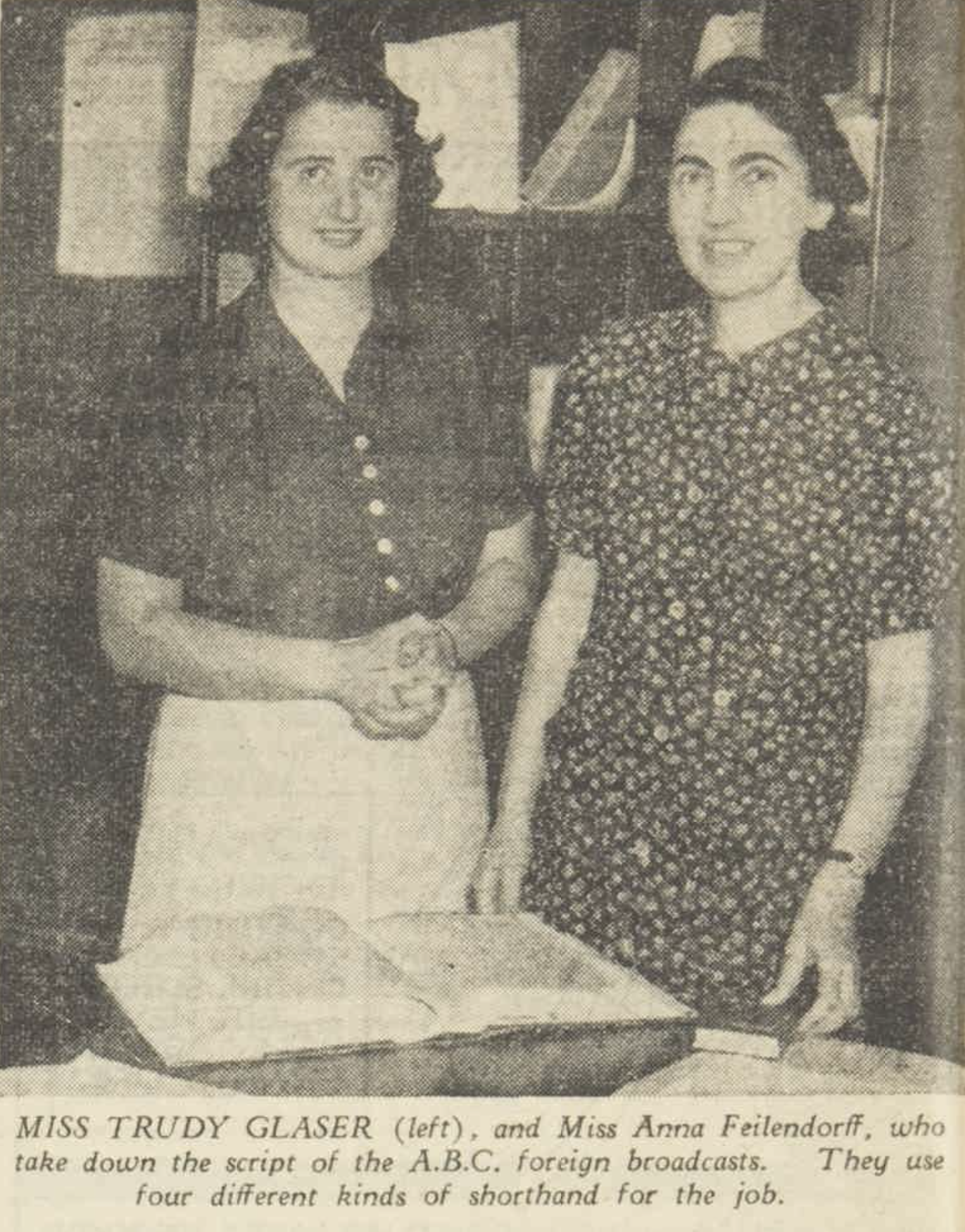
Shorthand helped the war effort in various forms. Two expert shorthand writers, Trudy Glaser and Anna Feilendorff, worked in the Shortwave Department of the ABC. Their jobs were to listen to and record material from abroad in German, French, Dutch, Spanish, Italian, Turkish and Arabic languages. Miss Feilendorff had a Doctorate of Languages from Vienna University. Both had gained their shorthand skills in Europe, prior to migrating to Australia.
In a benevolent capacity, shorthand writers aided injured soldiers in Melbourne’s Heidelberg Military Hospital. Patients who had lost sight or limbs would dictate their letters to stenographers who would type and post them to their families. This story prompted a poem in an Adelaide newspaper, part of which is below:
“New diggers may at first be shy
Of girls their words shorthanding;
But soon they will talk – stenographers
Are very understanding.”
Shorthand Writers at the Front
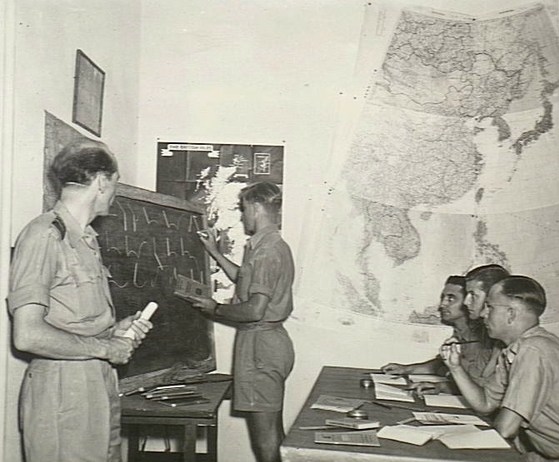
Military operations in the combat zone also required stenographers. Male shorthand writers carried out these duties, however there appeared to be a constant shortage of skilled personnel.
In 1941 war correspondent John Hetherington highlighted what he described as the Australian Government’s current ‘archaic view’ of not sending women overseas to carry out these duties. He witnessed over 200 members of the South African Women’s Auxiliary Army Service personnel (WAASies), using their skills in desert camps in the Middle East. Hetherington asserted that Australian Imperial Force members who were qualified shorthand writers often concealed the fact, as they knew they would almost certainly be diverted from fighting to fill the stenographic gap. Later in the war AWAS stenographers served in New Guinea.
Carmel Taylor is a shorthand historian, teacher, and has worked as a stenographer. In 2021 she authored With Pencils Poised... A History of Shorthand in Australia. Read her earlier Trove blog on the history of shorthand in Australia.